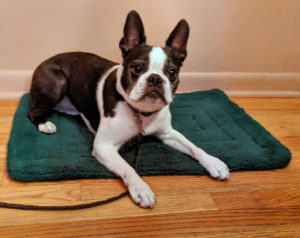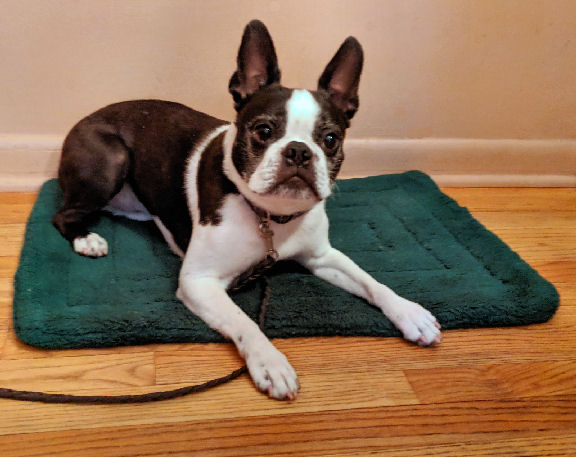Waiting is dog training’s hardest part.
It’s also the most important part. If you can’t resist temptation and tell your dog what to do, the dog will never figure it out on their own. You’ll spend the dog’s entire life telling them.
That gets old after a while. You start to think to yourself “Why doesn’t my dog know this by now? We’ve been doing it the same way for years!” It’s because you never gave your dog the gift of letting them think it through.
Perfect example

Teaching dogs the “Place!” Game is where we see it most often in our classes. No question, it’s hard to just stand there, staring at a mat. Sometimes the dog doesn’t even look at it during class. The people get discouraged and say “Can’t I just tell him?” “Can I point to it?”
No. No you can’t. Because the whole point of the game is for the dog to figure out that their action triggers the jackpot. When they choose to look at the mat, sniff the mat, step on the mat, sit on the mat, lie down on the mat, the treats rain down.
Once they do figure it out for themselves, your life gets easier. When you need the dog out of the way for any reason, whether it’s the pizza delivery guy at the door, or Grandpa halt-stepping through the room, your dog will understand what to do when you say “Place!”
So just wait. Stare at the darn mat for the whole training session. The dog may not get it today. But at some point, they’ll wonder what’s so fascinating about that thing. They’ll start interacting with it. And once the treats start falling from above, the lesson will be well on its way.
Opposite side of the coin
It’s difficult to wait for the dog to do something. It’s just as hard to exercise patience for them to stop doing something. But you can’t teach a dog “don’t.” You can reward the behavior you want.
Let’s use jumping on people as our example. Most people just grab their dog’s collar and haul them away, apologizing to the jumpee all the while. They’ve stopped the current problem, but done nothing to teach the dog what to do.
Instead, if you have a cooperative jumpee, set up the situation. While the dog is being rude and trying to get in the person’s face, what if everybody ignored the behavior and stared at the ceiling. Then, the instant the dog has all four paws on the ground, the dog gets rewarded and lots of attention. Just a few repetitions and most dogs catch on. If the dog gets even more treats and pets for sitting, they’ll probably choose to sit.
Thinking creatures
Think about it this way. If you think your dog is smart, they probably are. They’re also probably lazy. Which means they’ll happily foist off the chore of thinking if you let them. Thinking requires effort. Why should they do the work when you’re right there to do it for them?
The irony here is that once dogs do learn to think and make good choices, it snowballs. Dogs love solving puzzles, playing training games, and figuring stuff out. That first time you just wait them out will be rewarded many times over through your years together.
Dog training’s hardest part, like many things in life, is worth the payout. You can continue to do things the easy way and always tell your dog what to do. But in the long run, it’s easier on both of you if your dog actually knows what to do.

